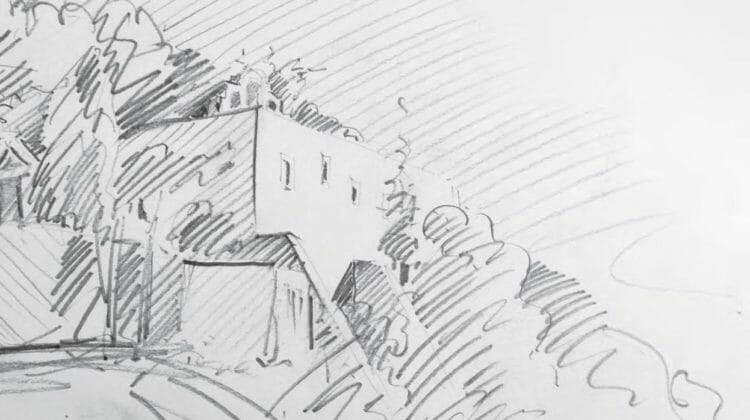
As promised to share with you the artistic work of the Parian ceramist Stelios Ghikas, accompanied by the inspired text of the priest Evangelos Valantasis, we continue this time with the presentation of the monastic life.
In this part, dear reader, we will present the monastic sites of Paros. For hundreds of years, monks, both men and women, have built spiritual fortresses away from busy places to devote themselves to God alone. In these less fertile regions, the monastic God emerges through the orchards, or the sight of the blue sea, or the bright red geraniums, or the olive and lemon trees, and then enters the dark and mysterious chapels. Be a pilgrim and discover the monasteries of our island starting with those near Parikia.
The Saints Anargyroi
On the peripheral road of Parikia, just after the cemetery, there is a path that leads to the monastery that dominates the town. It’s about a 45-minute walk away, but you will certainly want to stop for a while and look around to see Parikia and its harbor getting smaller and smaller. You will feel as if the whole world is getting smaller, as if you have moved away from active participation in a tangible world, which is the main characteristic of this monastery.
For the monk, who left the world for such a place, any other activity besides prayer and meditation seems like a dream, perhaps a nightmare, or at best a complex and futile activity. From the courtyard of the monastery, the monk can raise his gaze to God and the glorious heavens, or look down to the concerns of everyday life.
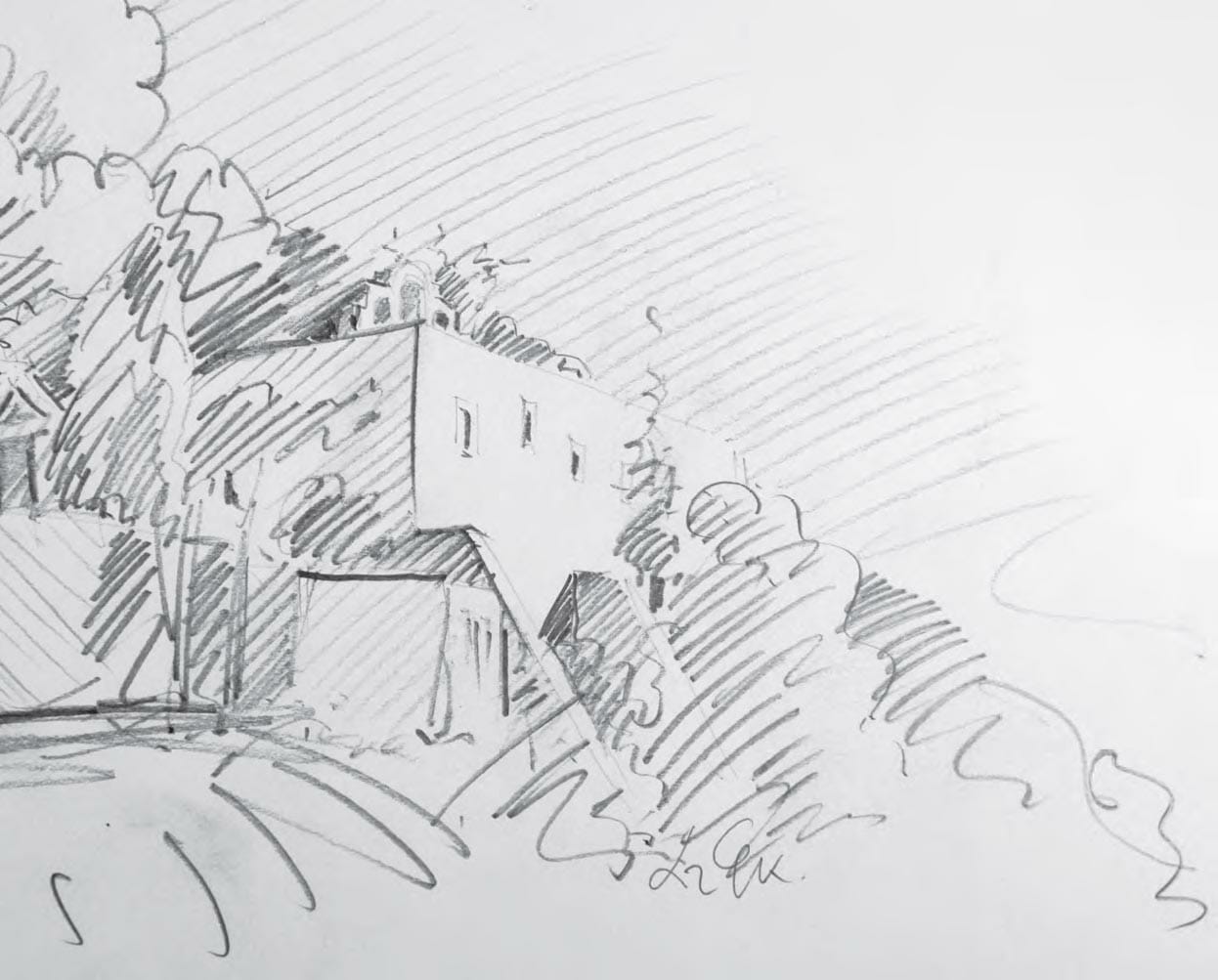
This monastery is dedicated to Saints Cosmas and Damianos, two doctors who did not receive money for the services they offered. Their nickname, “Anargyroi”, means exactly “those who did not accept money”. Their memory is celebrated on July 1st and the gathering begins on the evening of June 30th. Many times, even in autumn, you will find dried flowers around the icons of Saints Kosmas and Damianos in the chapel (the icon of the saint in which the church is dedicated is usually next to that of Christ at the iconostase).
Located above the city, the monastery offers an oasis of tranquility. The first chapel, the closest to the entrance, is the main church of the monastery and was built in 1660. The other buildings were added in the following centuries. Once in the darkness of the transept, you can reflect on your relationship with the world and rethink your values and that is what generations and generations of monks did.
When taking the path of return, stop for a while to observe the beauty that surrounds you. Feel the aromas of flowers and herbs, rub a little sage in your hand … These sensations hide therapeutic powers and it’s free !
Loggobarda
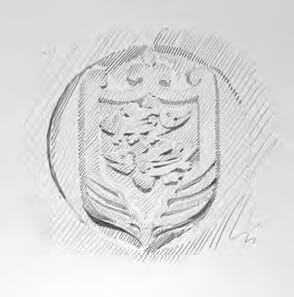
The monastery of Panagia Zoodochos Pigi is the jewel of Paros. Nestled in the mountains between Parikia and Naoussa, this monastic castle offers views of the valley to the sea. Today, the monastery is in full revival.
The path leading to it crosses fields of grass and greenery. The scent of sage, the beauty of cardamon flooding the roadside and the colors of the plants are the prelude to the serenity you will feel when you enter the monastery. When you approach the building, you see a small chapel inside the cemetery. This chapel is for prayer and it is dedicated the memory of the dead monks. Next to it is an ossuary, where the skulls and bones of the monks rest after the exhumation of their bodies seven years after the burial, because embalming is not practiced in Greece. It is a peaceful place in a beautiful landscape, far removed from the life of the monastery. Here death is not a terrible thing, it is somehow the continuation of a life consecrated to God.
From the sacred space of the cemetery one reaches the great outer wall of the monastery. Looking out the door, the building looks massive (four to five floors) and impregnable. There are information signs – access is restricted to men, wearing appropriate clothing and respect for monastic life. However, these prohibitions are quickly forgotten by the beauty and grace of the buildings and the monks you meet. Ring and wait for a monk to open you. This will take some time, because the monks are in no hurry to open their door and there is a tradition of letting visitors who wish to enter the convent wait a little in order to check on their perseverance.
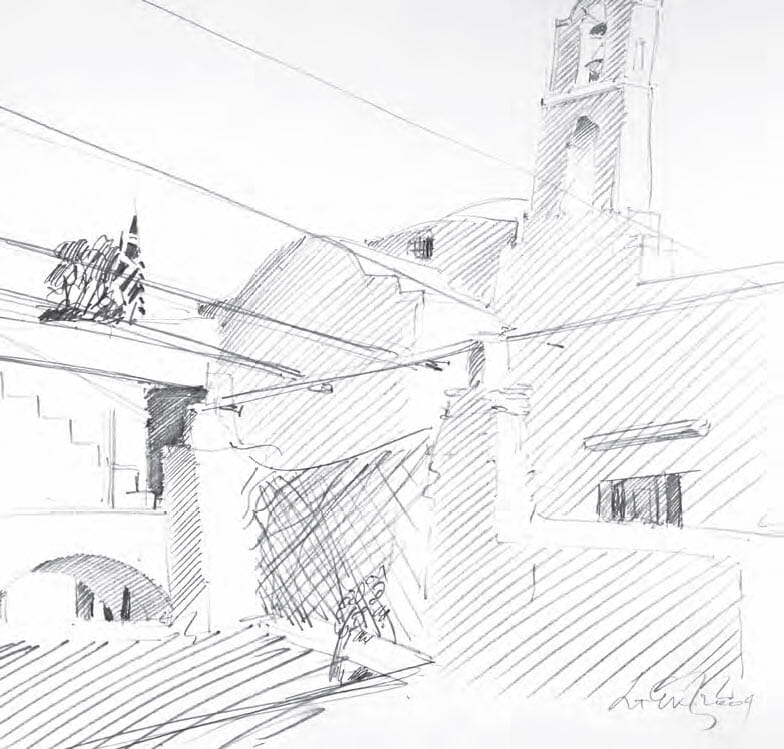
When you enter the monastery grounds, the first thing that impresses you is the pristine beauty of the whitewashed walls. The light seems to permeate the body and the soul, as you adapt yourself to the space and volumes that resemble a small town. The monks, whose cells are on the upper floor, walk along a semi-covered corridor above the portico entrance. The chapel of the monastery, a building dating from 1638 stands in front of you. It is full of beautiful paintings and photographs, the smell of incense permeates the wood and the air vibrates by the prayers of the monks. The good thing is first to go to the chapel to pray, then to engage in a conversation with a monk. And above all, do not ommit to pray in front of the miraculous image of the Virgin Mary, Zoodochos Pigi (on the left of the Great Gate of the Sanctuary) – to whom the monastery is dedicated. Especially the time of the evening prayer, the light makes her scarf wave and it seems that she opens her arms to the visitors.
After the prayer, you may have the chance to chat with a monk. Most speak only Greek, and perhaps some know English, German or French – but that’s enough to look deep into the eyes of those people who have dedicated their lives to prayer. Their soul is open to God and they welcome those who seek God. Who needs words in front of such holiness ?
Often the monks will offer their “blessing” in the abbot’s waiting room on the upper floor. The “blessing” consists of a glass of cold water, a small portion of alcoholic drink and a loukoumi. Do not expect a discussion, your hosts provide the “blessing” and then they leave the room to let you eat and drink in front of the austere photographs of old abbots and other orthodox hierarchs. Often on the table there are several religious texts in different languages. After the “blessing”, you can leave the place, not without first asking for the blessing of the Hegumene himself, or the monk who accompanied you.
The monastery of Taxiarchis, Archangel Michael
On the main road from Parikia to Naoussa, on the other side of the valley, to the hills in front of the Logovarda monastery, is the monastery of Archangel Michael, commonly called the “commander”. In the Orthodox churches, the two archangels, Michael and Gabriel, guardians of the entrance to the sanctuary. Their representation can be found at the top of the church doors to protect it and to warn those who come to implore divine protection in these sacred places. The word “taxiarque” refers to a military rank, it is someone who runs a large army always ready to fight. And it is an appropriate name for these warriors of the spirit, in this case the monks, who for many generations have lived, fought and prayed in this monastery.
Monastic life has always been equated with the struggle against all those things that prevent man from attaining holiness, and the Archangel Michael is the witness of this struggle.
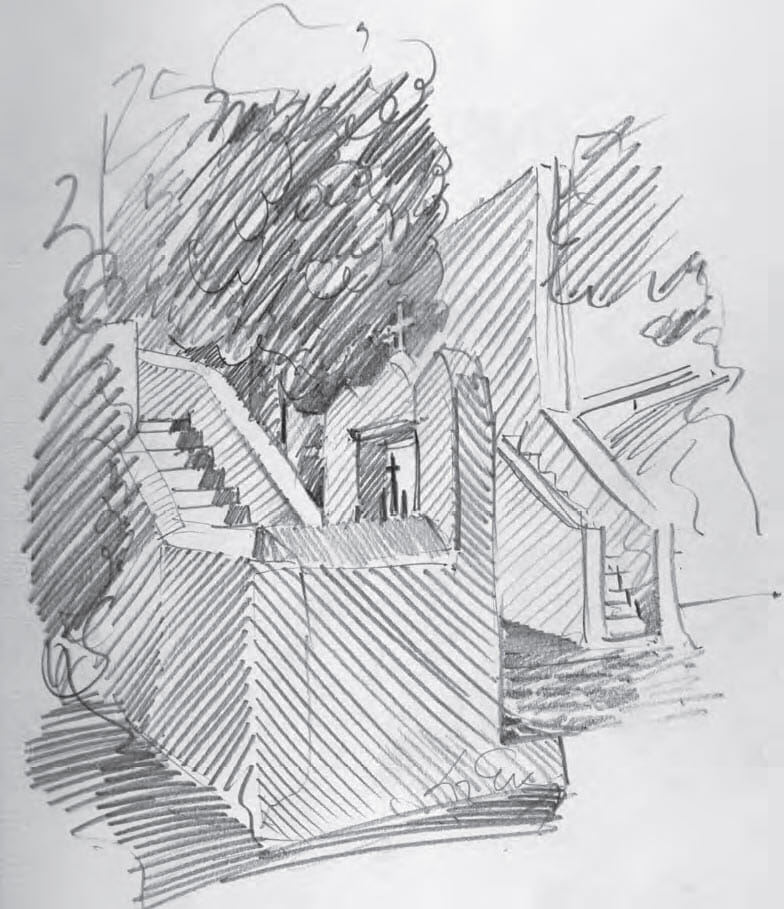
The church, of which the monastery was built, was built by an illustrious unknown, Marino Bitzara in 1643, as evidenced by a marble plate in the church. The first monks built their monastery a few years later, in 1676. During its history, the monastery once housed women and sometimes men, but today it is empty. For a few years there was a Loggabarda hermit, but his advanced age forced him to rejoin his community.
Unlike most monasteries in Paros, this one is mainly built of wood, with the exception, of course, of the exterior stone wall. Inside, it is reminiscent of a medieval house – the lower floor for animals, the kitchen, storage and upstairs there are monks’ cells, meeting rooms and reception rooms. It is a beautiful building and has spacious rooms (at least for monastic standards), all overlooking the valley.
The monastery of Taxiarchis testifies to the tranquility of the monastic life. Sitting above the animated world, visible to all, the monks prayed and read in absolute silence and spoke little to each other. This disconcerting silence was followed with passion, because they believed that he guided them to God who was everywhere, behind the appearance of things. Silence was therefore the key to reveal the mysteries of God and the main means of their struggle. The monks needed someone like Archangel Michael, the commander of the army of angels, to protect them from the turmoil of the outside world while they explored their inner world.
The Monastery of the Metamorphosis (Christ in the Forest)
Sometimes a monastery is not just a monastery. This convent of the Transfiguration reserved for women, which all the inhabitants call “Monastery of Christ in the forest”, has two important objectives : it shelters a community of nuns and it is the burial place of Saint-Arsenios of Paros.
The monastery takes its name from the Transfiguration of Christ, when Elijah and Moses saw Jesus on the mountain accompanied by Peter and John, and his white clothes sparkled. The church and the first auxiliary buildings of the monastery were financed by the Mavrogenous family, an illustrious family who founded and supported many of the island’s post-Byzantine religious buildings. The chapel, the “katholikon”, is a fairly large and imposing building. A number of women live at the monastery.
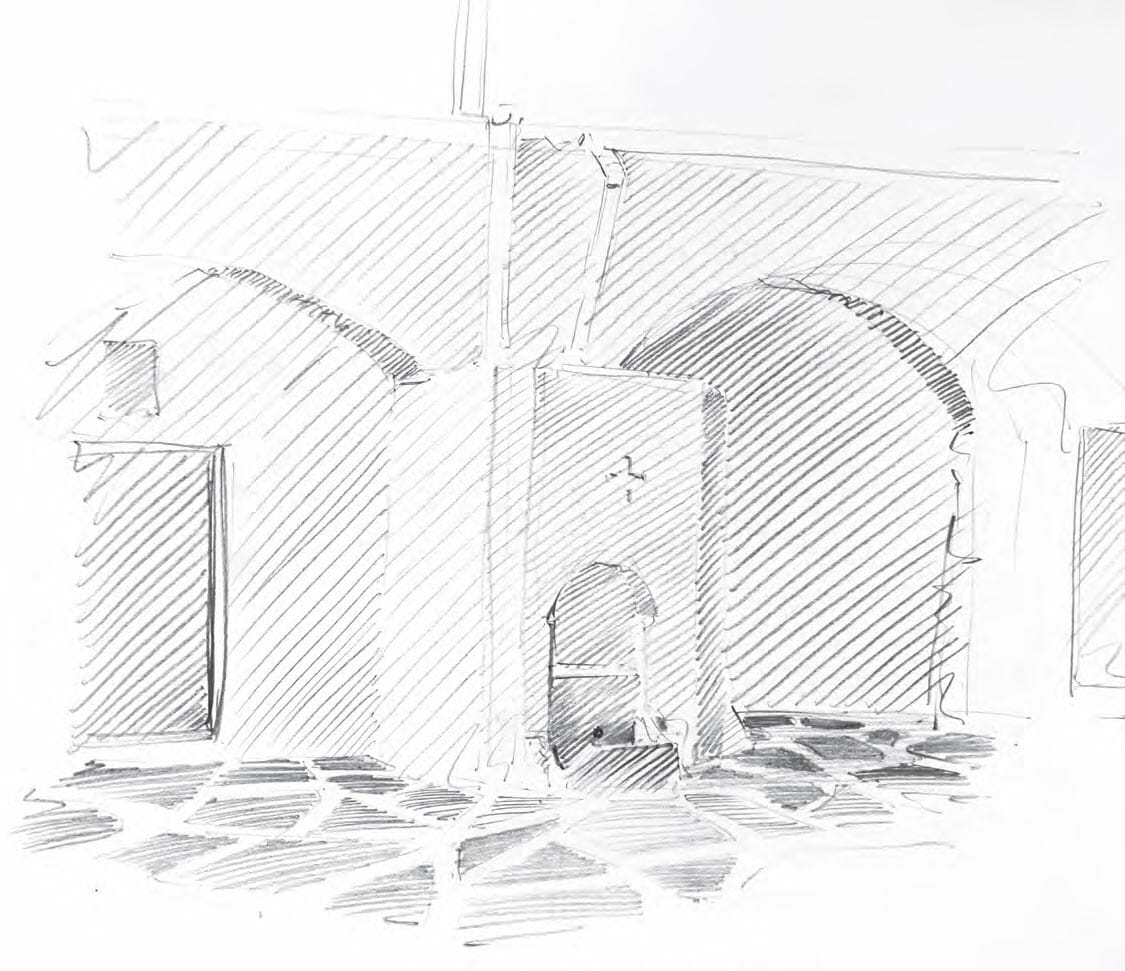
What makes this monastery interesting is the presence of the relic of Saint Arsenios of Paros in the chapel. Saint Arsenios (1800-1877) was a monk of the monastery of St. George and became spiritual leader of the nuns who lived in the monastery. In general, single women followed male monastic rites for Mass and Sacraments, under the guidance and advices provided by a monk who served as spiritual leader of the community. Usually, the monasteries have a place of residence for the spiritual leader, located at a certain distance from the apartments reserved for women. The chapel is located where Arsenius lived during his stay in the monastery. The relic has been there since, because he died while carrying out his duties. In front of the monastery, a large church dedicated to him has been built.
So why not have buried the Saint ? Why are the relics exposed to the eyes of the faithful and other pilgrims ? For the Orthodox, the significant proof of holiness is the incorruptibility of the flesh. After death, the body of a saint is not disintegrated like the bodies of ordinary people, but remains indestructible – dried up, but intact. When you approach the relics, you will see the dehydrated flesh of the Saint’s hand. But for the nuns, the flesh of the saint is much more. They have become the guardians of the sacred tradition left to them by the canonized Arsenios and are witnesses of his miraculous powers even today.
The monastery has become a place of pilgrimage. Here, people seeking miraculous healing and awesome visions come to pray for help, waiting for a miracle and for a quick healing. Sick, blind, disabled, mentally ill – we all climb the same steps as you. Some receive the blessing of the Saint and some leave with hope still intact. The nuns provide care to all who come to ask for miraculous healing. They listen to the pilgrims’ problems, offering them shelter and food, generously giving all their help and join their prayers with those desperate people in order to resorb, in a way, the sadness and despair of those who come to their little monastery. And they incorporate in their prayers the sorrows of others, in a certain way they carry the weight of these people.

Leave a Reply